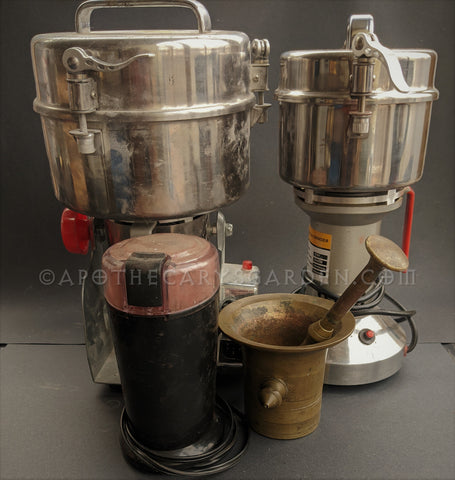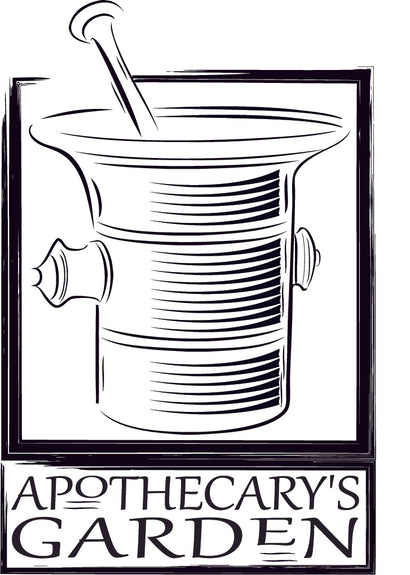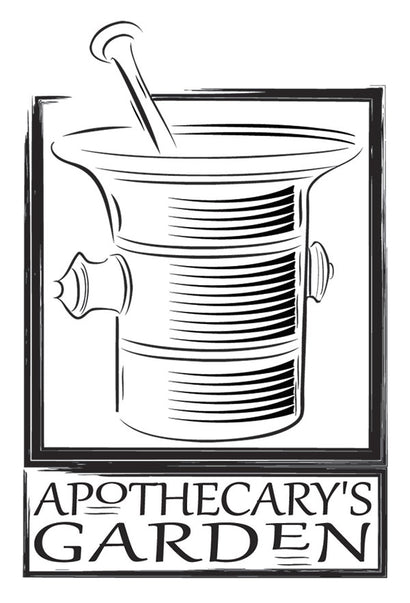Free shipping in USA & Canada on orders over $100.00
Free shipping in USA & Canada on orders over $100.00

How to Grind Frankincense, Myrrh and other Resins
by Dan Riegler November 17, 2023 7 min read 1 Comment
Frankincense, Myrrh and other aromatic resins are becoming better known and integrated into our Western lives as interest in perfume, Incense-making and the healing power of plants grows. Though we often learn of these resins through the popularity of their essential oils, their greatest therapeutic gifts lie in their resin portion.
Boswellic Acids in Frankincense
Therapeutic compounds of special note in Frankincense are the Boswellic acids, a group of resin acids found in Frankincense that are lost through distillation. While therapy through aroma (Aromatherapy), is a well-respected healing modality, resins offer therapeutic compounds and benefits that essential oils cannot replace.
Pine, Spruce, Elemi and all the other aromatic resins contain enormous healing potential in their resin portion. Let us not be blinded by the novelty of essential oils. We have used whole oleoresins for thousands of years.
Tincture of Myrrh for oral care
Medicine, Incense, Perfume & Cosmetics
Since the dawn of civilization we have made medicine, incense, perfume and body-care products with Frankincense, Myrrh and other aromatic resins. Though modern science and chemistry have transformed our lives with novel chemicals drawn from nature and “nature-identical” molecules, we continue to rely on the integrity of Nature’s Pharmacopeia that has sustained us for thousands of years.
Why grind Frankincense?
Both Frankincense and Myrrh are composed of alcohol and oil-soluble resin, as well as water soluble-gum in a homogeneous matrix. To access the resin portion for oil or alcohol extraction one must first break down the matrix and expose these compounds to the solvent. Contrary to popular belief, most types of Frankincense and Myrrh will not dissolve in a single solvent such as oil, alcohol or water. Grinding is critical to preparing a tincture, an oil extract and most other Frankincense or Myrrh products.
Mortar and pestle

Well-used Brass Mortars and Pestles. A Timeless solution. From my collection, (Read obsession).
We have been grinding plant material with mortar and pestle since the dawn of our civilization. They offer one the opportunity to connect with the material and the process on a personal, experiential level, which can only contribute to the quality of the products we create. Mortar and pestle are anchored in the deepest of archetypes (Yin and Yang, male and female, and are associated with creation, fecundity, birth, transformation and transmutation etc.). Electric grinders should not replace mortar and pestle without thoughtful consideration and abundant prior experience.
I have to add, that the act and rhythm of grinding and pounding with mortar and pestle can create a deep meditative state. Don't be surprised if you open portals and access ancient information or connect with ancestors who, exactly like you, sat and crushed materials with a mortar and pestle.
Damage control
Grinding resins with a Mortar and pestle is messy and usually involves pieces of resin flying out like shrapnel. Carpets are a favourite destination for errant resins. Using a deep mortar (I prefer Brass for resins), and spreading one’s spare hand over the opening will cut down on escapees until one reaches a finer and tamer grind. Heavy, smooth-surfaced, hard mortars are best for resins. Avoid mortars made of wood, porous stone and unglazed clay.
Modern methods
When grinding larger quantities of resins or when time is limited, an electric grinder is useful. Regular electric coffee grinders or herb grinders work well. Burr mills and hammer-mills, for grain, roots or coffee, are NOT suitable. Large pieces of resin, 1/2 Inch and up. will need to be broken down before grinding. Inserting the resin chunks into a Ziploc bag and pounding them carefully with a hammer will reduce them to a size the grinder can handle.
Caution!
It is always wise to unplug electric grinders before opening and removing powdered material. Never insert tools or fingers while an electric grinder is plugged in. The safety mechanism of coffee grinders can and will get gummed up with resin and malfunction. Avoid painful and bloody accidents. Be smart; take your time and don't take risks with dangerous machines..

Frankincense & Myrrh-Tears of the trees
Frankincense and Myrrh come out of the tree in liquid form, often as a white emulsion of gum and resin with their respective solvents, water and essential or volatile oils (up to 10% of each when we receive them). This means that when we grind Frankincense and other oleo gum resins, we liberate the moisture and essential oils that have been locked in the material since the day they bled from a tree in the desert.

Process with Patience
Fresh Frankincense and Myrrh may contain a lot of moisture and will gum-up the grinder quickly. It is best to start with a few short bursts of the grinder and check to see if you are getting a powder or a porridge. As soon as the ground material is removed from the grinder, it needs to be spread out and dried. If a finer powder is needed, it must be ground and dried again. I often grind and dry the resin three to four times in the shop to achieve a fine, loose powder that will not clump. This is especially important when preparing tinctures and oleo extracts of Frankincense or Myrrh. We need to expose as much of the resin to the oil as possible

Chill
Freezing fresher resins before grinding will create a larger window of time in the grinder before solidifying. It will also give you more time to spread them out before they harden. Roughly a half-hour per 100 grams of resin in the freezer works well. (I honestly don't bother with this method anymore. Instead, I just start with a shorter spin in the grinder before my first drying session).
Resin cleaning hacks
Clean-up of sticky resin residue (on Mortars, Pestles, hands, tools and surfaces), is accomplished with vegetable oil. A steel Brillo pad expedites the process. The oil/resin blend is then dissolved with dish soap & warm water, rinsed with warm water, and dried. This is a perfect solution for the clean-up of most Resins. (And leaves hands feeling beautifully moisturized!). This method works equally well when cleaning the pot after distilling resin essential oils.
My secret formula
An alcohol and dish soap mix at a ratio of 1:3, 1 part Dawn dish soap and three parts 95%, {180 proof}, alcohol works exceptionally well for cleaning glassware that has a layer of hard or sticky resin on it. It is especially useful after preparing or pouring resin tinctures. After scrubbing with the concentrated soap/alcohol blend, scrub with small increments of warm water as it dissolves the resin.
Cleaning your electric grinder
The easiest method to remove residual resin from an electric grinder is to fill it 1/3 to 1/2 full of raw rice and run the grinder till the rice is finely powdered. This will remove most of the resin residue clinging to the blades and sides of your grinder. A wipe with a damp cloth should finish the job.
Yunnan Dragon's Blood resin-Intense colour and fragrance. Makes a deep red ink-In the shop
Different “Resins” and their solubility
Pure Resins and Oleoresins-These will all dissolve in alcohol and warm oils
- Pine
- Spruce
- Fir
- Frankincense Frereana
- Frankincense Thurimels. The honey-coloured resins exuded by Boswellia Neglecta and Rivae and some other Frankincense types.
- Elemi
- Mastic & the Pistacia family
- Most types of Dragon’s Blood resin
- Soft Copals
- Labdanum
Resins that dissolve in alcohol and not in oils
- Sandarac
- Benzoin
- Dammar
- Sal Resin
- Some types of Dragon's Blood resin

Oleo Gum Resins-These materials require grinding before extracting in oil or alcohol
- Most types of Frankincense
- Most resins of the Commiphora, (Myrrh), family
When we burn oleo gum resins such as Frankincense and Myrrh on charcoal as incense, note that the first release of fragrance is clear, “bright” and closer in fragrance to the fresh material you are burning. These are the essential oils that evaporate at the lower temperatures. After this first note from the essential oils, and probably overlapping it, the resins and their less volatile compounds will melt into the charcoal & burn. Then, if there is a prominent percentage of gum in the material as in most representatives of Myrrh and Frankincense, the water-soluble gum will not yield itself to the heat. It may bubble a bit but will not dissolve into the charcoal; it will char and burn, emitting a crude smell of burnt material and form a black lump on the coal.
This burnt gum is regarded as one of the ingredients in the ancient Egyptian “Kohl” eyeliner with the addition of Sulfide of Antimony or Lead and other ingredients.
Frankincense Frereana also called Maydi-in the shop
Of the Frankincense family, Frankincense Frereana is a good example of a pure oleoresin. It is found only in Somalia and Somaliland and completely dissolves in alcohol and warm oils. It melts into the charcoal without releasing a “burnt” smell or leaving a residue.
So, now that you know how to grind Frankincense, Myrrh and other resins, keep in mind that no matter what you create with these fragrant gifts, always take clear notes. Your future self will thank you.
Dan

Dan Riegler is an Herbal Apothecary, Artisan, formulator, distiller and advocate for sustainable management of our aromatic and medicinal plants. A lover of Nature, he is friends with many trees and a sap for resins. Apothecary's Garden provides an ever-growing selection of fresh & fair trade, ethical and sustainably harvested medicinal and aromatics including Frankincense and Myrrh, local and exotic fragrance materials, artisan distilled essential oils, natural perfume ingredients and animal essences. Apothecary's Garden shop also showcases Dan's aromatic, cosmetic and therapeutic preparations, salves, cremes, tinctures and oils, as well as those of Guest artisans from around the world.
The Blog, Apothecary's Garden is a journal about Herbs, plants and processes, recipes, plant Alchemy, traditional wisdom and our Relationship with Nature.
1 Response
Leave a comment
Comments will be approved before showing up.
Also in Apothecary's Garden Blog

How to make an oil extract of Frankincense-2 methods
by Dan Riegler January 17, 2024 7 min read

Suhul Myrrh-A gift from the trees
by Dan Riegler January 03, 2024 5 min read 1 Comment

How to prepare Winter Medicine with local Tree Resins
by Dan Riegler December 14, 2023 9 min read 1 Comment
Recent Articles
-
How to make an oil extract of Frankincense-2 methods
January 17, 2024
-
Suhul Myrrh-A gift from the trees
January 03, 2024
-
How to prepare Winter Medicine with local Tree Resins
December 14, 2023
-
A complete guide to Frankincense resins
December 04, 2023
-
The Many Benefits of Frankincense Tea
November 29, 2023
-
Ambergris-How to prepare an oil, Attar and tincture
November 27, 2023
-
COPAL-What you need to know before you buy.
November 20, 2023
-
How to Grind Frankincense, Myrrh and other Resins
November 17, 2023
-
How to burn Frankincense and other aromatic resins
November 14, 2023
-
How to prepare Castoreum and other aromatic delights
November 06, 2023
Categories
- Ambergris
- Animal Welfare
- Animalics
- Aphrodisiacs
- Aphrodite
- Apothecary Arts
- Boswellia
- Boswellia Carterii
- Boswellia Frereana
- Boswellia Neglecta
- Boswellic Acids
- Boswellis Serrata
- burn incense
- Censer
- Chest Rub
- Commiphora
- Commiphora Myrrha
- Copal
- Cough Balm
- DIY
- ferula
- Frankincense
- Frankincense Extract
- Incense
- Incense burners
- Incense Making
- Incense Resins
- kenya
- Medicated oils
- Muscle Rub
- Musks
- Myrrh
- Perfume
- Perfume Ingredients
- Perfume Making
- Perfumery
- Pine
- Pine Resin
- Sacred Copal
- Samburu
- Spruce Resin
- Suhul Myrrh
- Sustainability
- Sustainable Harvest
- Traditional Medicine
- Tree Medicine
- Tree Resins
- Tutorials
- Wildcrafting
- Wood finishes
Where are you Blog posts Dan?
Please bear with me as I rewrite, update and link my old Blog posts to the new shop. If you don't see the tutorial or post you are looking for, pop in periodically. I should have them all up, updated and running in the next few weeks.
Subscribe
Sign up to get the latest on sales, new releases and more …
- Comments
- DISQUS








Sharon Hamilton
November 28, 2023
Very interesting, thank you. I have been wondering about making my own essential oil as I use a lot of Frankincense